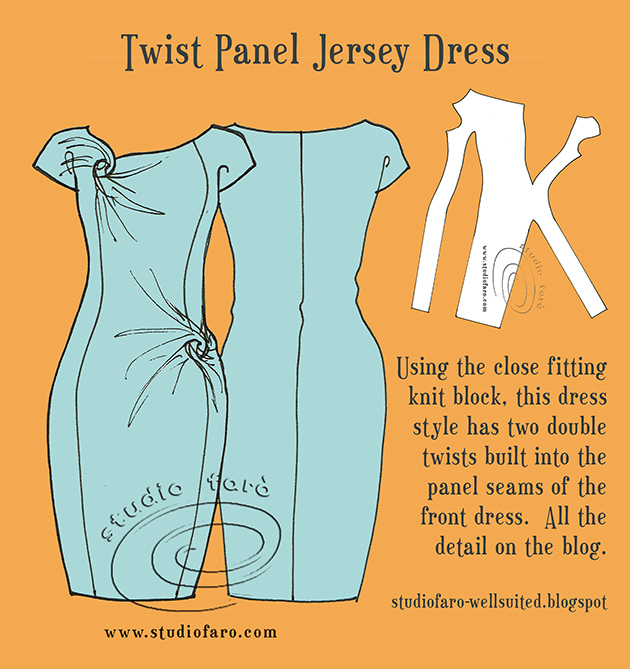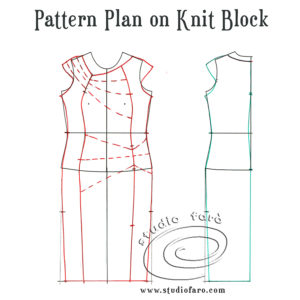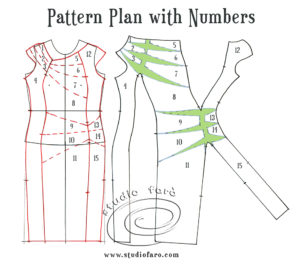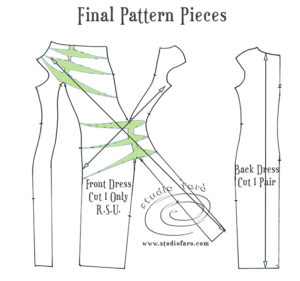14 Apr Twist Panel Jersey Dress
Posted at 14:42h
in Pattern Making Instructions, Pattern Puzzles, Stretch Patterns, Womens Knit Block
0 Comments
Once again the much favoured Jersey Twist is featured on the Saturday morning #PatternPuzzle. A big thank you to all our fans that come along to play and watch. 🙂
This week there is an addition to our #PatternPuzzle post with the inclusion of imperial measurements for our US fans. Huge thanks to Lisa at Poldapop Designs for pointing out how much easier this would make the teaching of our worksheets in the states. Lisa is one of the first teachers to take on our Basic Skirt Draft Worksheet as a teaching tool in her classes. The results have been positive so we will work hard to provide imperial equivalents in all our pattern making instructions. 🙂

If you’d like to learn my method for creating Twist Drape Patterns I have a detailed worksheet for making Jersey Twist Patterns. For just a few dollars you’ll get the same training you’d get if you came to the workshop in my studio.
Working with your close-fitting knit block:
- Mark in a wide neckline on the back dress and the asymmetric neckline on the front, connecting to the right-side panel seam.
- Taper the side seams of the skirt area by 3cm (1 1/4″), from hip to hem.
- Mark in the panel seams from neckline to hemline.
- Please note that I have placed the panel seam slightly outside the bust point hoping to achieve a more elegant placement (possible 2-3cm/3/4-1 1/4″).
- Use the panel seam to make the most flattering shape on the body. You can exaggerate the waist shaping through to a generous hip shape to achieve a curvaceous effect.
- Mark in the drape lines from the twist position on the panel seam in the direction of the twist (dashed lines).
- To prevent distortion in sewing, place notches to control the sewing of the twists and all seams.
- The cap sleeve is a 5-6cm (2-2 3/8″) extension on the shoulder line with a 5mm (3/16″) lift over the shoulder point.
- Shape the underarm point to enable flow through in cutting and making.
- Shape the CB seam in the waist area equivalent to a back dart of 2-3cm (3/4-1 1/4″).

Number all your separate pattern pieces before cutting and spreading for the twist drape. How much you add to each opening will depend on the fabric you use. I suggest a safe range of 4-6cm per opening. Use 6cm for light fabrics or a more curvaceous figure. Use 4cm for heavier fabrics or slimmer figures. Making a toile in the same fabric as your final sample garment is essential. Any variation in fabrics may alter the fit and drape of your garment.

The final pattern pieces below are the complete pattern. You may add a bind for the neckline and armhole or simply overlock and turn the edges.
The straight grain stays with the CB line in the back pattern. The grain in the front dress has been located to place the majority of the drape on the bias grain. This improves the drape behaviour of the twist in the final sample.

And finally a big thank you to all our fans for spreading the word and sharing our work. Let us know if you are making any of our #PatternPuzzle designs and I’m happy to provide technical assistance via the comments section. Enjoy! 🙂
Take this moment to sign up for my fabulous newsletter! Every month or so I send an email newsletter with new website content and always, always an enormous discount code for all my sewing patterns, garment blocks and pattern making instructions.
This discount code is for subscribers only. Don't miss out!


No Comments